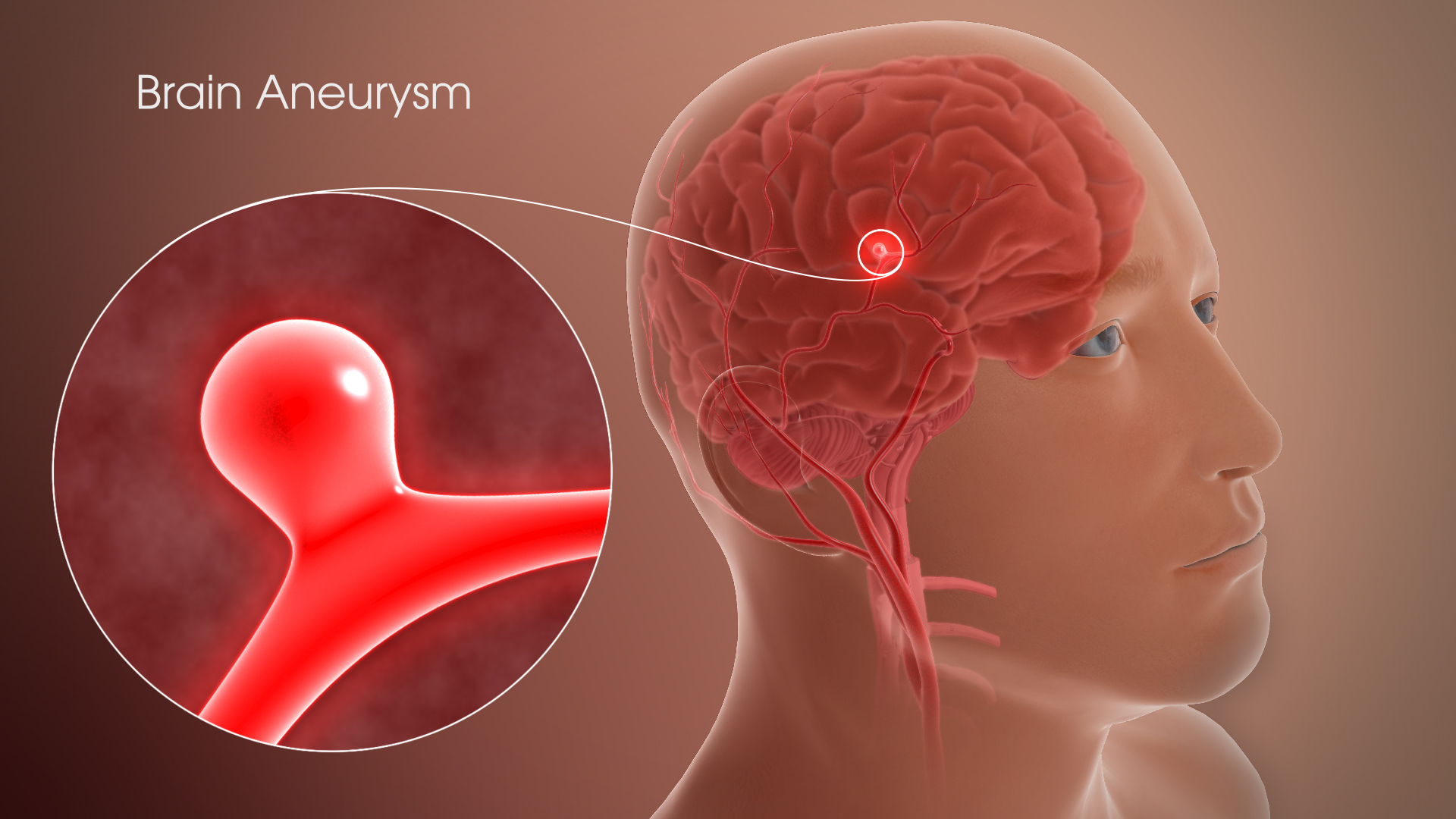A bulge or ballooning of a blood vessel in the brain is known as a brain aneurysm. It occurs when a weak area in the brain’s arterial wall bulges and fills with blood. This bulge is also known as an intracranial or cerebral aneurysm. In some cases, the brain aneurysm may grow to the size of a small berry. Most aneurysms do not cause any symptoms or complications. But some might start leaking or even rupture and cause bleeding in the brain.
Brain aneurysm can affect people of any age and is a life-threatening condition when it ruptures because it can cause stroke, brain damage, or even death. It is more common in adults than in children and affects more women than men. Ruptured aneurysms are experienced by about 30,000 people in the U.S every year, out of which 40 percent are fatal.

Symptoms
Brain aneurysms that have not ruptured do not usually cause any symptoms unless they are very large and press on the nerves and brain tissue. The most common symptoms of unruptured aneurysms are:
- Headaches
- Blurred or double vision
- Dilated pupils
- Drooping eyelids
- Difficulty in speaking
- Weakness and numbness on either side of the face
- Pain above and behind the eye
- Dizziness
Symptoms of ruptured aneurysms are:
- Extremely severe and a sudden headache
- Nausea
- Vomiting
- Stiffness in the neck
- Blurred or double vision
- Sensitivity to light
- Seizure
- Loss of consciousness
- Dizziness
- Confusion
- Drooping eyelid
- Trouble walking and in normal coordination
Causes
There is no exact cause for developing brain aneurysms but there are several factors that increase the risk. These factors are:
- Atherosclerosis (a disease in which there is a build-up of fat inside the arteries)
- High blood pressure
- Diseases affecting the blood or blood vessels
- Infection
- Head trauma or head injury
- Tumors or cancer in the head or neck
- Family history of brain aneurysms
- Abnormalities at birth like tangled blood vessels in the brain region
- Smoking
- Excessive consumption of alcohol
- Abuse of drugs such as cocaine or amphetamines
Treatment
Treatment for a brain aneurysm will vary depending on the size, location, and the symptoms of the aneurysm. A small aneurysm that does not cause any symptoms may not need treatment at all. For headaches and pain in the eyes, pain medication may be prescribed. A ruptured aneurysm will need immediate treatment. Treatment includes stopping the flow of blood into the aneurysm. Surgical clipping, endovascular coiling, and flow diverter surgery are the types of surgery that are used to prevent further growth of aneurysms.
If one has an aneurysm that is small and unruptured, certain changes in the lifestyle can help manage and prevent it from leaking or rupturing. These include not smoking, not using drugs such as cocaine and other stimulants, lowering the blood pressure with exercise and a healthy diet, managing cholesterol levels, and exercising regularly but with moderate intensity.
Disclaimer: The information in no way constitutes, or should be construed as medical advice. Nor is the above article an endorsement of any research findings discussed in the article an endorsement for any of the source publications.








